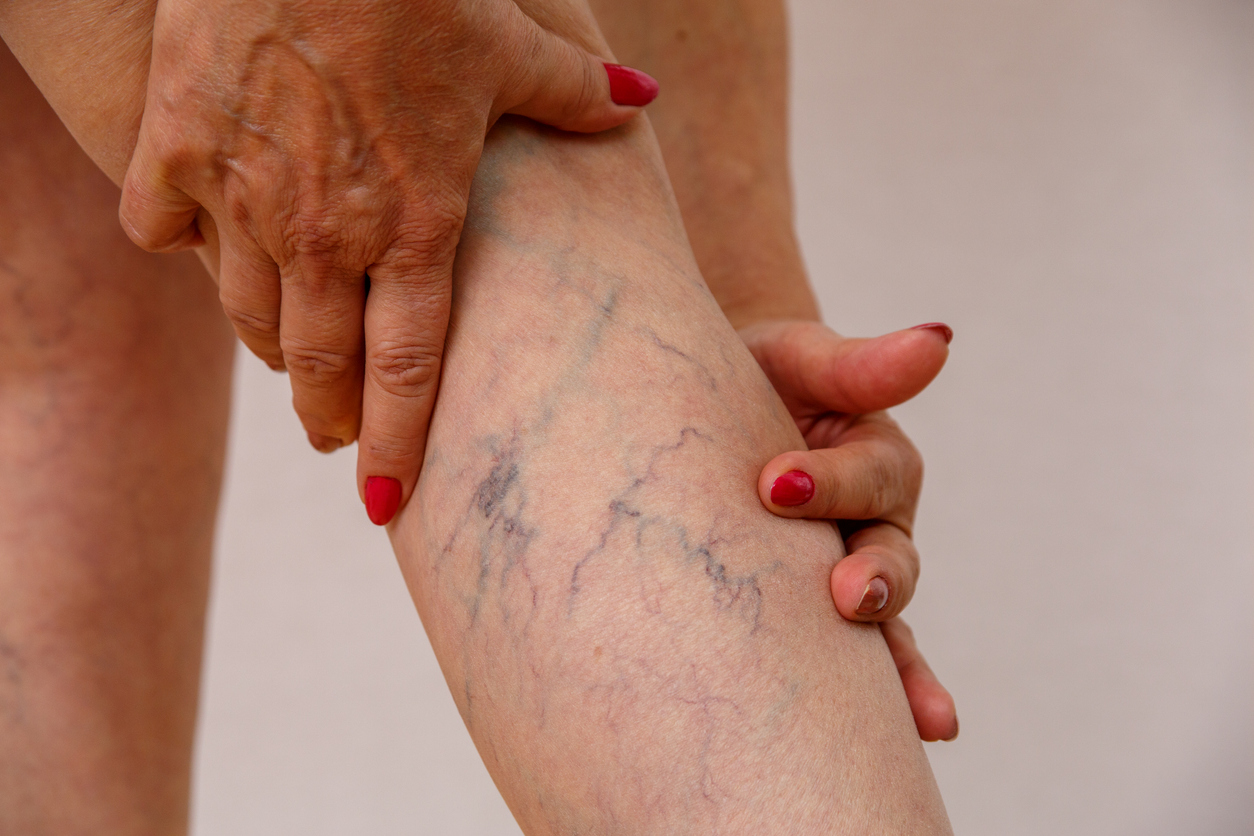
Not every spider vein or varicose vein requires treatment. But if you could be susceptible to these serious complications, schedule a visit with a vein specialist.
Roughly 30 million Americans have varicose veins. For many of these patients, their varicose veins or spider veins may be minor, primarily a cosmetic issue that doesn’t cause overt symptoms. If you’re at this point, you may or may not choose to seek medical treatment. Although varicose veins and spider veins won’t disappear on their own, such patients may be able to make some lifestyle changes to minimize their appearance and prevent them from becoming a serious medical problem.
On the other hand, you may be realizing that your vein condition is actually getting worse. Especially in the case of varicose veins, symptoms like pain, swelling, throbbing, and a heavy feeling in the legs may degrade your quality of life or even lead to serious complications. When that happens, it is time to consider one of several minimally invasive treatment options. Here’s when to know it’s time to make an appointment with a vein specialist.
Table of Contents
ToggleSelf-Care for Varicose Veins
Varicose veins and spider veins result from malfunctioning valves in the veins. These valves are tasked with opening and closing at just the right time so that blood pumps back to the heart from the lower extremities. Several factors, including genetics, age, and obesity, can eventually weaken the values, which lets stagnant blood collect within the vein walls. As the vein walls are stretched further and further out from under the skin, varicose veins appear on the legs and feet.
According to the American Society of Dermatologic Surgery, 40 percent of women suffer from venous insufficiency, including spider veins. By the time a woman reaches age 80, that percentage rises to 80 percent. Tangles of blue spider veins rarely cause symptoms and are not a medical concern, but are a cosmetic issue for legs and feet.
In contrast to spider veins, varicose veins can turn painful without treatment. That doesn’t mean that at the first sign of a varicose vein you necessarily need to seek medical intervention. Varicose veins, for example, grow during pregnancy because of increased blood flow combined with pregnancy-related hormones that relax the vein walls. Those factors set the stage for varicose veins, but the condition usually disappears after delivery.
In the early stages, you may want to try some self-care techniques to diminish the visible signs of varicose veins and slow down the progression of the disorder. These methods include losing weight and exercising, particularly through workouts like walking and biking that work the calf muscles and help improve blood flow. You can also try elevating your legs above your heart to keep blood moving in the right direction and wearing elastic compression stockings to provide additional support.
Time to Treat Varicose Veins
If your varicose veins are asymptomatic and don’t bother you cosmetically, you can likely choose whether or not to seek medical treatment. You should, however, first consult with a doctor to ensure that you are not ignoring potentially dangerous underlying conditions.
For instance, some people may notice the pain and throbbing in their legs, but don’t associate the symptoms with varicose veins because they don’t see the bulging twists of blue and purple lines. They then go to a doctor to find a cause, and after an ultrasound examination, learn they have varicose veins deep within the leg. This can be dangerous because of the risk of deep vein thrombosis.
And of course, if you are experiencing pain or discomfort that is clearly related to varicose veins, it’s time to visit the doctor. If you experience any of the following conditions, you must contact a vein specialist as soon as possible:
- A varicose vein that bleeds easily and profusely.
- An open sore on the leg or ankle that doesn’t heal.
- A varicose vein that is red, warm, and tender to the touch.
- Red, swollen, or blistered skin around the varicose vein (a condition called skin dermatitis).
Most of the conditions listed here arise because oxygenated blood is unable to reach the skin, and, therefore, the skin cannot heal properly. These conditions tend to worsen if left untreated, so it’s important to contact a doctor quickly.
It’s also important older people get their varicose veins checked, whether or not you are experiencing symptoms. Without treatment, varicose veins may lead to serious disorders, like blood clots and other circulatory issues.
A Vein Specialist Near You
The Vein and Vascular Institute has four locations in New Jersey to take care of your vein health. If your varicose veins are causing you to miss out on the joys of life, it’s time to visit a vein specialist. Even if you aren’t experiencing pain and aren’t bothered by their appearance, you should have an examination by an expert to assess your risk factors and help you find ways to reduce or avoid varicose vein discomfort. We can detail several inpatient treatments that require little to no anesthesia and get you back to your activities within hours. Contact us today for an appointment.
